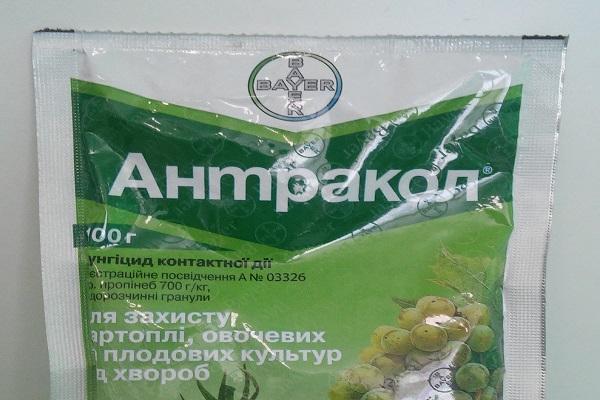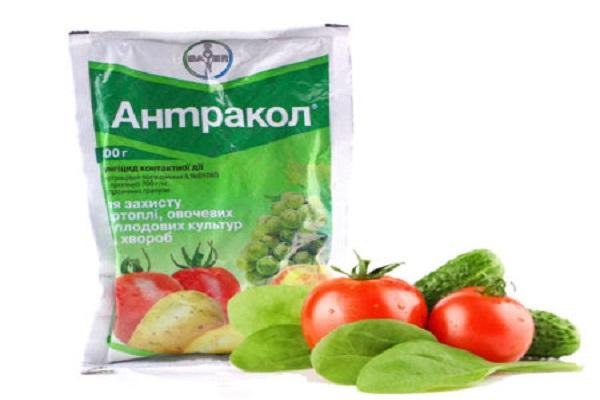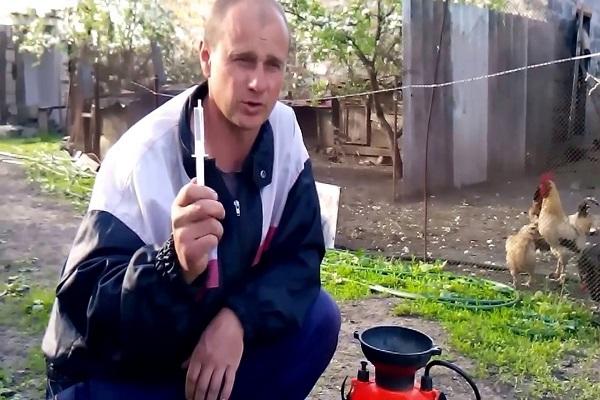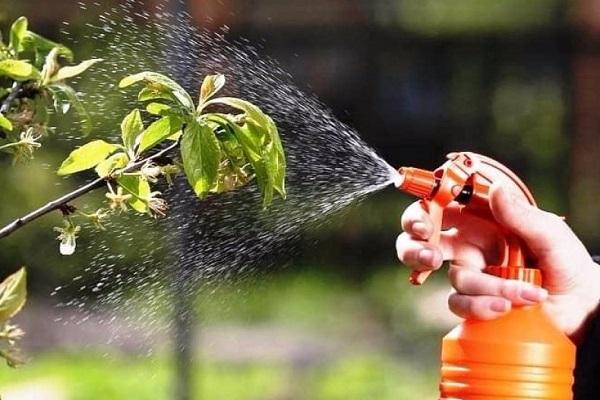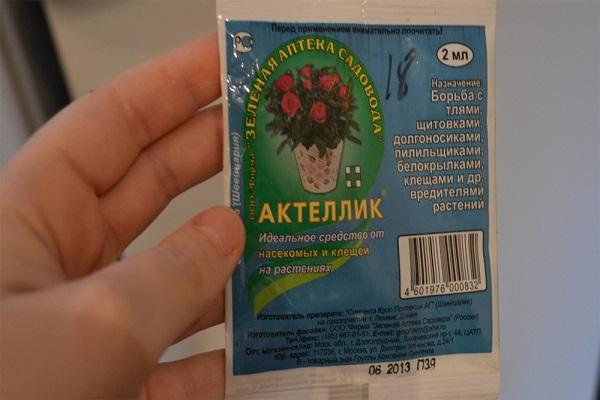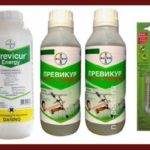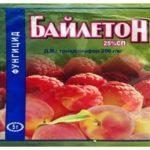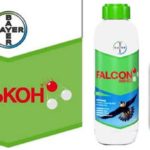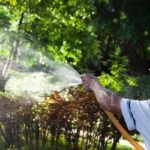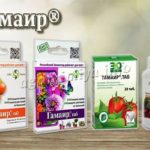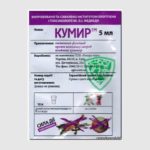On a small plot of land, summer residents plant cucumbers, tomatoes, and eggplants. While weeding the beds, gardeners discover that the leaves on some plants have begun to curl and turn yellow, which signals a late blight infection. If you do not treat the crops with special preparations, it is useless to count on a harvest. The fungicide “Antrakol” helps prevent the development of diseases in plants; in the instructions for use, the consumption rate and the number of sprays are indicated separately for different crops.
- Release form and purpose of the product
- Active substance and mechanism of action
- Advantages and disadvantages of the fungicide "Antrakol"
- How to properly prepare a working solution
- Instructions for use
- Safety precautions when working with the product
- Toxicity
- Compatibility with other tools
- Storage of the drug
- Analogs
Release form and purpose of the product
The drug, developed several years ago by Bayer, is packaged in bags of different sizes and goes on sale in granules and powder. Contact fungicide is used to control fungal diseases of fruit trees and vegetables. Spraying apple trees and plums with Antracol helps prevent the appearance of scab, and treating tomatoes prevents the development of late blight.
Active substance and mechanism of action
The fungicide does not accumulate in the membranes of plant cells, but remains on the surface of the leaves. The propinide contained in the product prevents fungal spores from multiplying, since it inhibits the enzymes involved in this process. The substance blocks the development of the disease. If the application rates are observed, Antrakol does not harm plants and improves the composition of the soil. The drug is used to prevent a large number of diseases caused by pathogenic fungi.
Advantages and disadvantages of the fungicide "Antrakol"
During treatment, the chemical does not get inside the plant, but protects the surface of the tops and leaves from fungal infection.
Contact fungicide has many advantages:
- The composition is not washed off during watering and rain, since a film is formed when spraying.
- Microelements contained in the main substance are absorbed by the soil.
- The drug is not addictive to pathogenic microorganisms.
- "Antrakol" does not pose a danger to people, birds, or beneficial insects.
The fungicide is alternated with other drugs used to combat crop diseases. The product does not have a negative impact on the environment.
How to properly prepare a working solution
To prevent the activation of fungi and to cope with the disease, fruit trees and vegetable crops are sprayed with Antrakol. Before using a fungicide, you must carefully read the instructions. The powder from the package is poured into a bucket of water, mixed and used when it dissolves. The consumption rate of the drug per hundred square meters of land is 15 g for treatment:
- apple trees - from scab;
- potatoes - from late blight;
- cucumbers - from gray rot;
- tomatoes - from Alternaria blight.
For grapes, the solution is prepared slightly differently. The granule is combined with a liter of water. The fungicide effectively fights mildew and gray mold and prevents the appearance of anthracnose.
Instructions for use
Fill the container of a garden sprayer with the prepared solution and spray the composition over the surface of the plants. The procedure begins in clear and calm weather. On a windy day, Antrakol can get on other crops and not cover the leaves with a film.
The fungicide begins to act after 2 hours. When sprayed three times, apple trees are not affected by scab, and vineyards are not affected by black spot.
Potatoes and tomatoes are treated with Antracol once every 2 weeks, cucumbers - twice during the summer. Procedures for combating fungi on trees are completed a month before fruit ripening, on grapes - 50 days before harvest.
Safety precautions when working with the product
It is necessary to wear gloves when preparing the Anthrakol solution and spraying crops. To protect the respiratory tract, it is recommended to wear a mask.
Any remaining packaging must be disposed of.
Toxicity
Fungicide is a drug of the 3rd hazard class. If the rules of use are followed, the product does not harm plants and does not cause intoxication in humans."Antrakol" does not have a negative effect on birds, animals, and insects that pollinate gardens.
Compatibility with other tools
The drug, developed by Bayer specialists, can be combined with all fungicides that are used to combat fungal diseases. "Antrakol" is used together with "Aktellik", "Ridomil", combined with "Topsin", "Topaz".
Storage of the drug
Contact fungicide has a long shelf life and is indicated on the packaging. The prepared solution must be used one day before. "Antrakol" must be stored in a dry and dark place, inaccessible to pets and children.
The drug loses its effectiveness when frozen.
Analogs
To prevent damage to vegetable crops and fruit trees by fungal infections and treat diseases, contact fungicides “Polycarbacin”, “Ridomil Gold”, “Acrobat MC” can be used instead of “Anthracnol”. The drugs have different compositions, but belong to the same group and act similarly.

